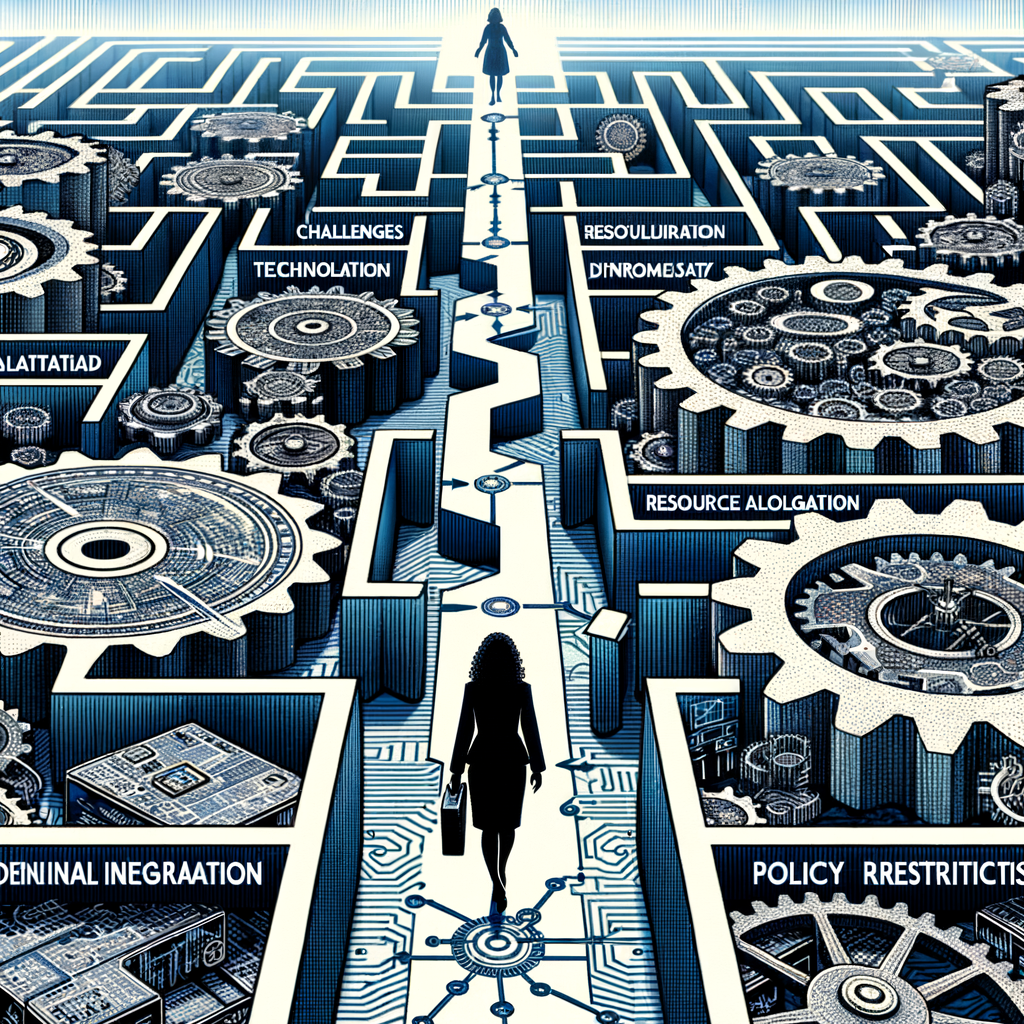What Are the Challenges of Implementing New Technologies in the Defense Industry?
The defense sector has always been at the forefront of technological advancements, from the development of radar during World War II to the more recent applications of artificial intelligence (AI) in modern warfare. However, as much as the industry is known for leading the way in innovation, it’s also grappling with significant challenges when it comes to implementing emerging technologies.
If you’re in the defense industry (like many of our clients), you’ve likely experienced some level of friction when it comes to adopting new tools, platforms, or systems. Whether it’s a lack of resources, bureaucratic hurdles, or concerns over cybersecurity, there are a variety of factors that can slow down progress or make change difficult. So, what are the key challenges, and how can they be addressed?
Let’s dive into the common roadblocks and provide some real-world, actionable insights.
Why Does Bureaucracy Slow Down Progress?
It’s no secret: The defense sector is known for its red tape.
Because the stakes are so high, there are stringent checks and validations that technology must go through before being adopted. And while this is understandable for ensuring security, reliability, and national interests, it can be frustrating when trying to roll out new solutions quickly.
For instance, the Defense Federal Acquisition Regulation Supplement (DFARS) demands a rigorous and often slow-moving procurement process. This can make it difficult for both defense contractors and internal teams to introduce cutting-edge tools in a timely manner.
The downside?
By the time you’ve worked through the bureaucracy, the technology could already be outdated, or competitors might have moved ahead.
How Can We Overcome This?
There’s no getting around the fact that regulatory compliance is paramount, but one way to speed things up is by fostering better communication between government agencies and contractors. Building strong relationships with acquisition professionals can help streamline the approval process.
Additionally, adopting agile methodologies for project management can allow companies to begin deploying smaller, incremental improvements rather than waiting for one large overhaul. This can reduce the time to deployment and keep things moving forward.
Is Workforce Resistance a Major Issue?
Let’s be honest—old habits die hard.
The defense industry has a lot of legacy systems and a workforce that might be more comfortable sticking to what they know. While technological advancements offer tremendous opportunities, many of these employees may not be ready or willing to adjust.
One common scenario we’ve encountered is engineers and defense personnel wary of AI-driven platforms taking over their roles. They might question, “Will I lose my job to automation?” or “How can I trust machine learning to make the right decision in a life-or-death situation?”
This type of resistance can harm the entire organization’s ability to adopt new technologies.
What’s the Solution?
Education and training are crucial here.
If your team understands the benefits of the technology you’re trying to introduce and how it actually enhances their work rather than replaces it, they’re much more likely to get on board. It’s worth investing in training programs and workshops that allow for hands-on experience with new tools.
Another tactic is to include employees in the decision-making process. When people feel like they have a say in the tools they’ll be using, they’re far more invested in the success of the project.
Can Cybersecurity Keep Up With Rapid Technological Changes?
The defense industry is a prime target for cyberattacks, and any vulnerabilities in new technology can be exploited by adversaries.
With the growing trend of integrating Internet of Things (IoT) devices, AI, and cloud computing into defense systems, the attack surface is only growing. We’ve already seen this play out with the infamous 2017 WannaCry ransomware attack, which affected computers globally, including those in defense entities.
So, a common question we get is, “How can we ensure that new technologies don’t open up new vulnerabilities?”
How Do We Tackle This?
Security should be thought of not as an add-on but as a core feature of any new technology. Cybersecurity needs to be integrated from the very start of the development life cycle, following the “Shift Left” approach.
Moreover, regular vulnerability assessments and penetration testing should become part of the routine. Partnering with cybersecurity specialists who understand the specific needs of the defense sector is critical.
Lastly, there’s a growing shift toward Zero Trust architecture, which assumes that no part of the network is secure and requires continuous authentication and validation for every user and device. Implementing this architecture can go a long way in addressing concerns about new tech deployments.
What About Integrating Legacy Systems?
The defense industry is notorious for sticking with legacy systems long past their prime. In fact, many defense agencies still rely on old-school COBOL systems developed decades ago.
So, when you’re trying to introduce new technologies, another challenge is ensuring that these systems can seamlessly integrate with existing infrastructure.
Take unmanned aerial vehicles (UAVs) or drones—amazing technology with tons of potential. However, integrating UAVs into the current defense communication and command systems can be a nightmare due to outdated interfaces and protocols.





